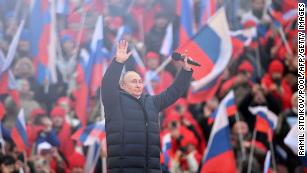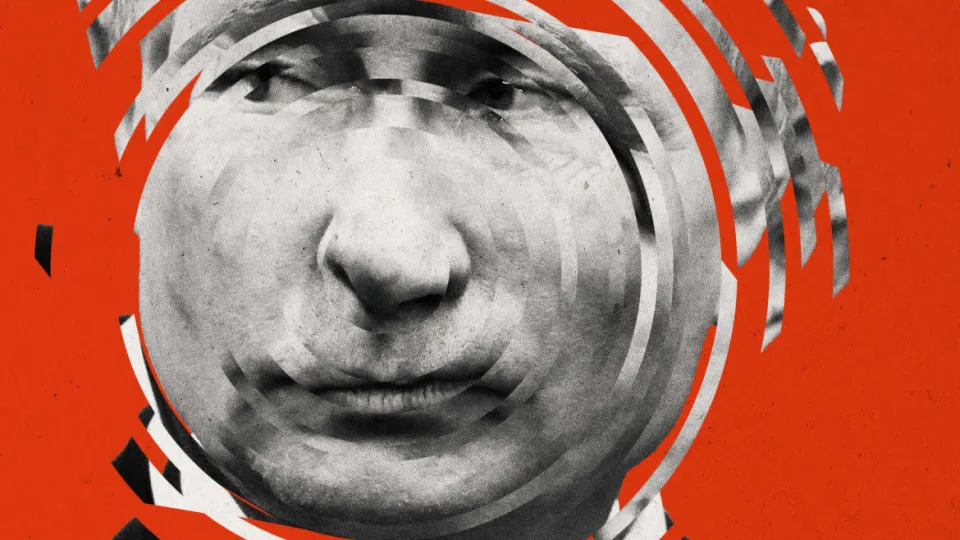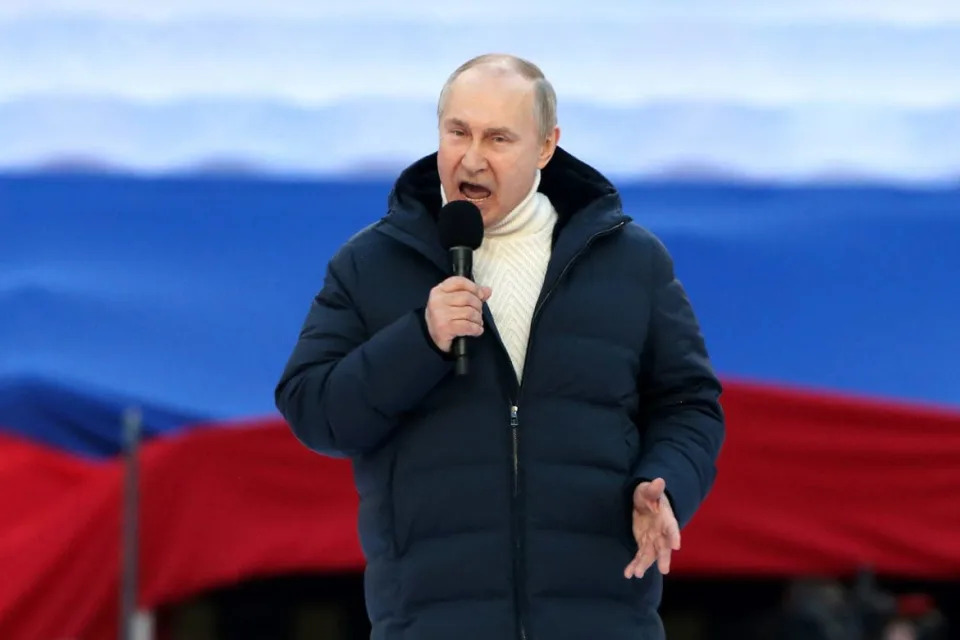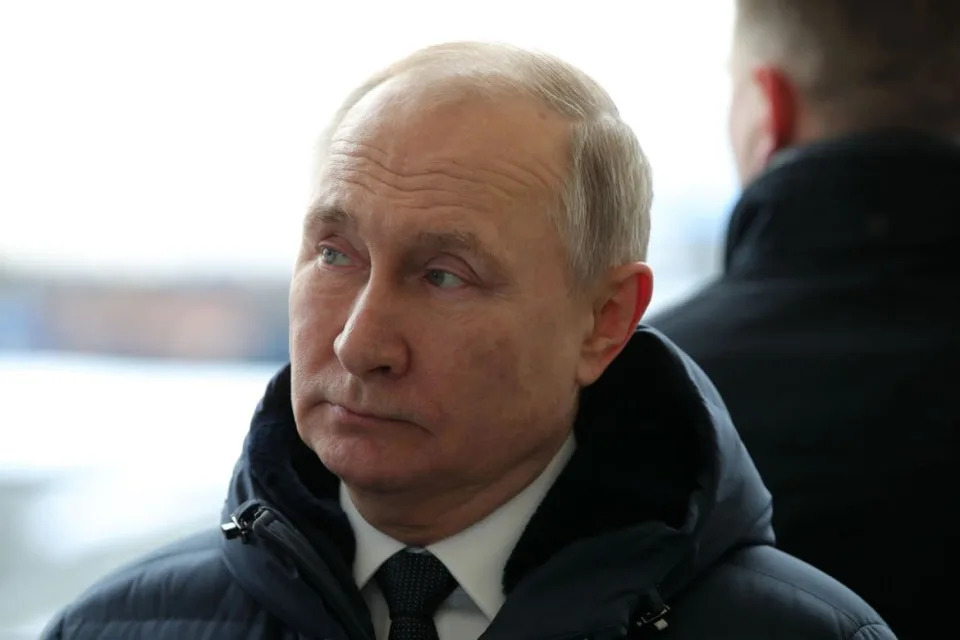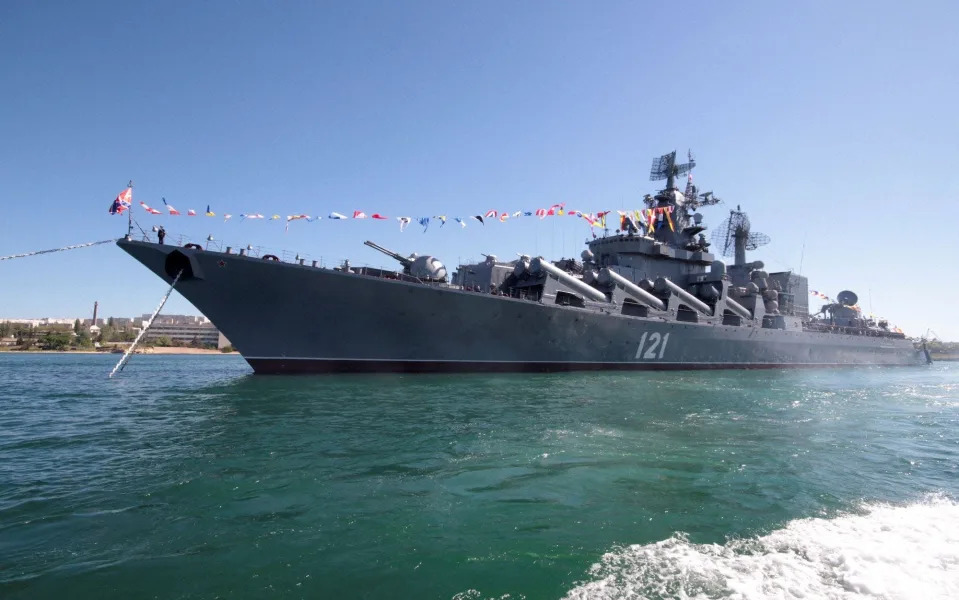Time
A Visit to the Crime Scene Russian Troops Left Behind at a Summer Camp in Bucha
Simon Shuster/Bucha, Ukraine – April 13, 2022

A crane lifts a corpse from a mass grave in Bucha; authorities say more than 400 civilians were murdered Credit – Rodrigo Abd—AP
Something terrible happened in the basement of the children’s summer camp in Bucha. The steps leading down to its unlocked door were lousy with trash from Russian army rations: dried macaroni, empty juice boxes, tins of meat. Standing at the bottom of the stairwell, Volodymyr Roslik, the camp groundskeeper, looked up and raised an eyebrow at me, as if to offer one more chance to reconsider going in.
The airless tunnel behind that door resembled a series of torture chambers divided by concrete walls. There was a room that appeared to be used for executions at the front, its walls pocked with bullet holes. In the next room stood two chairs, an empty jug and a wooden plank. In another the Russians had brought in two metal bedsprings and leaned them against the wall. To Ukrainian investigators, the tableaus suggested that prisoners were tortured here: tied to the bedsprings and interrogated; strapped to the plank and waterboarded.
“The signs of torture were also on the bodies,” says Taras Shapravskyi, the deputy mayor of Bucha. Five dead men in civilian clothes were found in that chamber, he told me. “They had burns, bruises, lacerations.” It was dark when the groundskeeper took me there the following week and shined a flashlight in the room where they had lain. Two trails of dried blood ran down a wall into the dirt, next to a fleece hat that appeared to have a bullet hole.

The Russian forces withdrew in the first days of April from this commuter town 15 miles outside the Ukrainian capital. Before the invasion, Bucha was well known in Kyiv as a place to get away, to drop kids off at the summer camp for a couple of weeks or take them to a ropes course called the Crazy Squirrel. Now Bucha is a byword for war crimes, like Srebrenica or My Lai. Scores of bodies littered the streets when the Russians left. A mass grave still occupies the churchyard. Shops and homes lie vacant, pillaged and burned. More than 400 civilians were found dead here, according to local authorities, nearly all with fatal gunshot wounds. “These were not the victims of shelling or aerial bombardment,” says Mikhailo Podolyak, an adviser to Ukrainian President Volodymyr Zelensky. “These were intentional killings, close up and systematic.”
Inside the summer camp for children ages 7 to 16, the Russians set up a garrison from which to terrorize the town, shooting at civilian passersby and bringing prisoners down into the basement. Local officials and witnesses to the violence told me the occupying force displayed a total lack of military discipline. Empty liquor bottles lay among snipers’ nests dug beside a playground. Dirty mattresses and cigarette butts littered an administrative building, which was strewn with an odd trove of loot apparently taken from local homes: an old boom box, costume jewelry, a leather briefcase, none of it valuable enough for the occupiers to carry as they fled. In one room, the Russians left a pile of hair shorn off with clippers. On the floor of another sat two lumps of human excrement. “This was no army,” says Roslik, the camp groundskeeper. “This was a horde.”
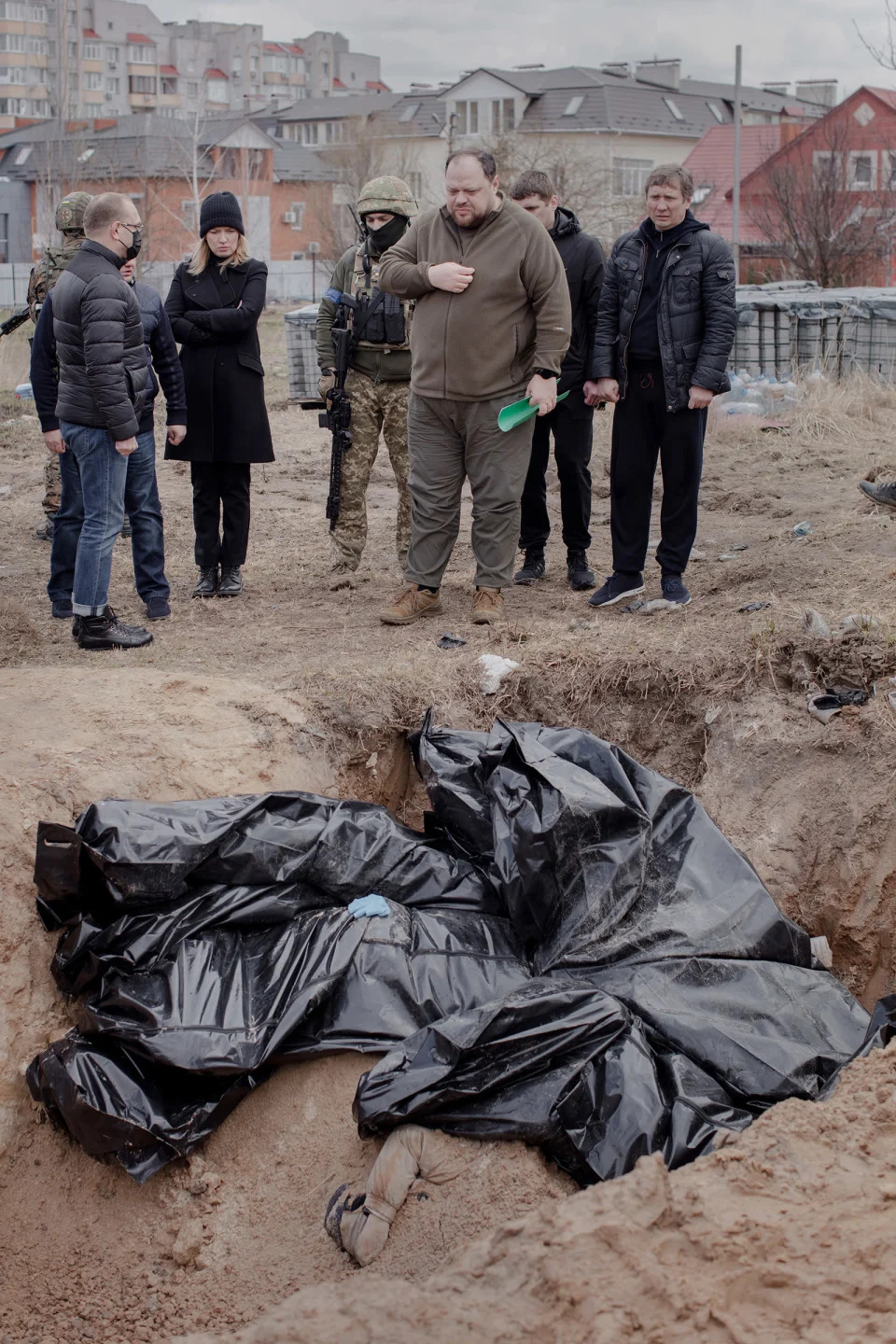
The scenes of depravity they left behind have changed the course of the war in Ukraine. The Russian army’s crimes, described in both Kyiv and Washington as a campaign resembling genocide, have hardened the will of Western governments to arm Ukraine and narrowed the space for a negotiated peace. Leaders from across Europe have come through Bucha to see the devastation for themselves. They emerged voicing new pledges of support for Zelensky, promising more than a billion dollars in military aid from the European Union alone.
“You stand here today and see what happened,” Zelensky told reporters on a visit to Bucha April 4, days after the Russians withdrew. “We know that thousands of people have been killed and tortured,” he added, “with extremities cut off, women raped, children killed.” Less than a week later, at least 50 more Ukrainians—nearly all of them women, children and the -elderly—were slain in a rocket attack against a train station in Kramatorsk, where they had gone to flee the country’s eastern regions, the focus of the war’s next phase.
David Arakhamia, the lead Ukrainian negotiator in talks with Moscow, says Bucha made it difficult to face the envoys of Russian President Vladimir Putin. “We wanted to stop the process altogether,” he told me. “We wanted revenge, not diplomacy.” But Zelensky urged the team to carry on, “even if there is only a 1% chance of peace after Bucha,” says the negotiator, who has continued holding talks with the Russians almost every day.
At the same time, investigators have fanned out across the country to document apparent Russian war crimes. A team of experts from France has come to help Ukraine gather documentation for an international tribunal. “The evidence is mounting,” U.S. President Joe Biden told reporters on April 12. “I called it genocide because it’s become clearer and clearer that Putin is just trying to wipe out even the idea of being Ukrainian.”
Moscow knows how bad this is. The Foreign Ministry in Moscow has accused Ukraine of “staging” the massacre to make the Russian forces look bad. Putin called Bucha a “fake.” His propaganda channels offered theories to undermine the grim reality with doubt. They suggested that crisis actors had posed as corpses in videos of Bucha. They claimed that “foreign mercenaries” came to town and killed people after the Russians withdrew.
But the barbarity was too blatant, and witnessed by too many people. The local government estimates that around 3,700 people remained in the town during the occupation. Their stories of looting, torture, rape, and murder are consistent with the evidence emerging from the ground.

Before the invasion, life in Bucha centered around the Church of St. Andrew, whose golden domes reach upward from a hill near city hall. The parish priest, Father Andriy Halavin, was officiating a funeral on the second day of the invasion, Feb. 25, as a battle raged for control of an airport just north of town. Explosions and helicopters ripped through the air, close enough to drown out his sermon at the graveside.
The battle went on for several days. The Russians needed that airport to land an invading force outside the capital, and the Ukrainians put up a ferocious fight, shelling the runways and blowing up a bridge to block the advance of Russian tanks into Kyiv. “All of this was happening over our heads—the flames, the booms,” Halavin recalls.
Control of Bucha changed hands at least twice before the Russians managed to seize the town in the first week of March. The battle had cost them dearly, and it left them angry. More than a dozen burned-out Russian tanks and personnel carriers stood in the streets. As the Russians dug in, they set up artillery positions in a local school and moved into the dormitories at the children’s summer camp.
Halavin considered keeping his church open as a sanctuary for locals. But he says he changed his mind after the Russian troops began going house to house, kicking in doors and dragging entire families into the streets. At one point the church itself came under fire, leaving deep gashes in the walls. “The soldiers were shooting at anything that moved. Men, women, children,” Halavin told me. “To cross the street was to stare death in the eyes.”
The priest stashed away his robes and did his best to stay out of sight. A few times during the monthlong occupation, he snuck back into the church to pray and fetch some candles for his home. By the second week, the smell of death in parts of Bucha became hard to bear. The morgue was full, and it was too dangerous to take bodies to the cemetery. Many victims were left in the road or covered with just enough soil to keep the dogs away.
A local coroner then asked Halavin to help organize a burial in the churchyard. The priest consented. On March 10, they dug a trench and waited for a truck to come from the morgue with a few dozen bodies. “There was no way to have a ceremony or any sermons at the grave,” he says. “It was all done quickly, with a few hurried prayers.”

The trench was still there, in the church’s shadow, when the congregation gathered for Sunday mass on April 10, their first since the end of the occupation. Most of the bodies had already been exhumed and sent to the morgue for identification and a proper burial. A long plastic sheet was draped over those who remained in the pit, to keep the crows at bay.
Olha Ivanitska, an elderly parishioner, saw two of her friends as she limped into the church’s vestibule. She embraced them and touched their cheeks with her hands. “You’re still alive,” she said. “We’re still alive.”
They knew they were lucky. As they emerged from their homes, from their basements and bunkers, the people of Bucha often found their friends missing or dead, their streets full of wrecked military vehicles, their neighbors’ homes shelled into rubble.
Some residents set out to assess the damage and rebuild. Leonid Chernenko, a janitor at School No. 3, came back to work on April 10 to check what the Russians had stolen. “All the computers are gone,” he told me while fumbling with the keys to the boiler room. That was the least of the problems. Sappers had not had time to check the school for booby traps and mines. More than a hundred empty boxes of Russian artillery shells lay in the schoolyard among empty beer bottles and army rations. Most of the windows had been shattered.
Around the school, many of the victims of the Bucha massacre still lie in temporary graves. One of them is at the edge of the children’s summer camp. Igor Kasenok, who lives across the street, told me he dug that grave one day in March. The man inside it had made the mistake of approaching the Russians on foot, Kasenok said. The soldiers shot him and left him there.
Kasenok found the body in the street the next day, when he went to fetch some firewood for the stove in his basement, a cluttered warren he had shared during the occupation with more than 30 of his neighbors and many of their pets. Kasenok gave the dead man the dignity of a burial, fashioning a cross out of some boards. “They could have shot me too for that,” he said while showing me the plot.

As we spoke, Kasenok’s wife came out, trailed by a pair of cats. We began to talk about their grandchildren. All three of them live around Luhansk, in a part of Ukraine the Russians took in early March. Kasenok and his wife haven’t heard from them since.
The urge to reassure the couple made me stammer, and the only thing that came to mind was the summer camp across the street. I suggested that maybe one day, after Bucha rebuilds, the kids could come visit and play over there. “Better to raze the place,” Kasenok answered. “It’s a place of killing now.”

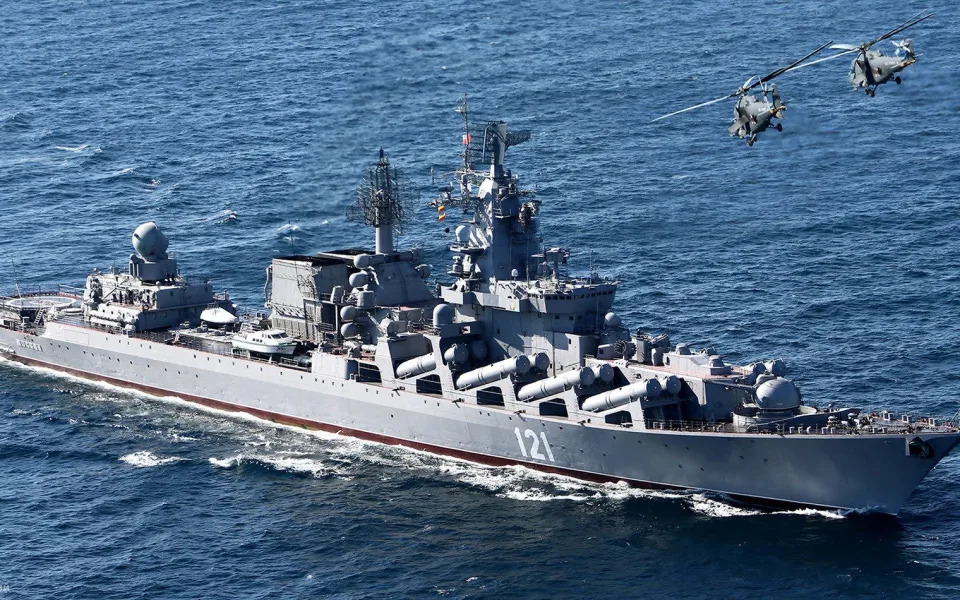
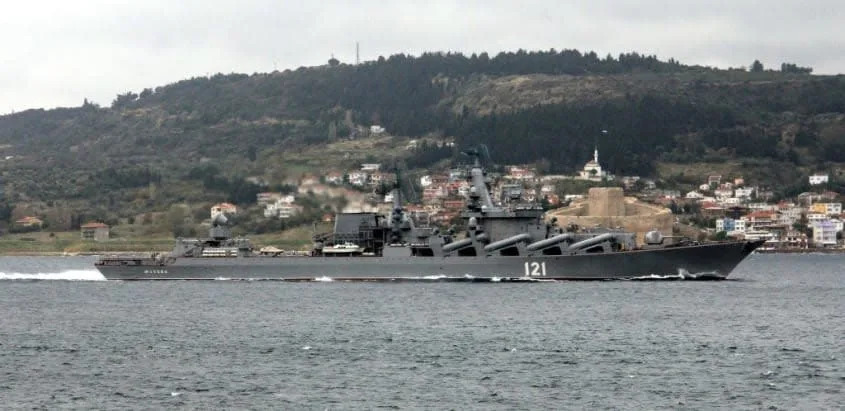

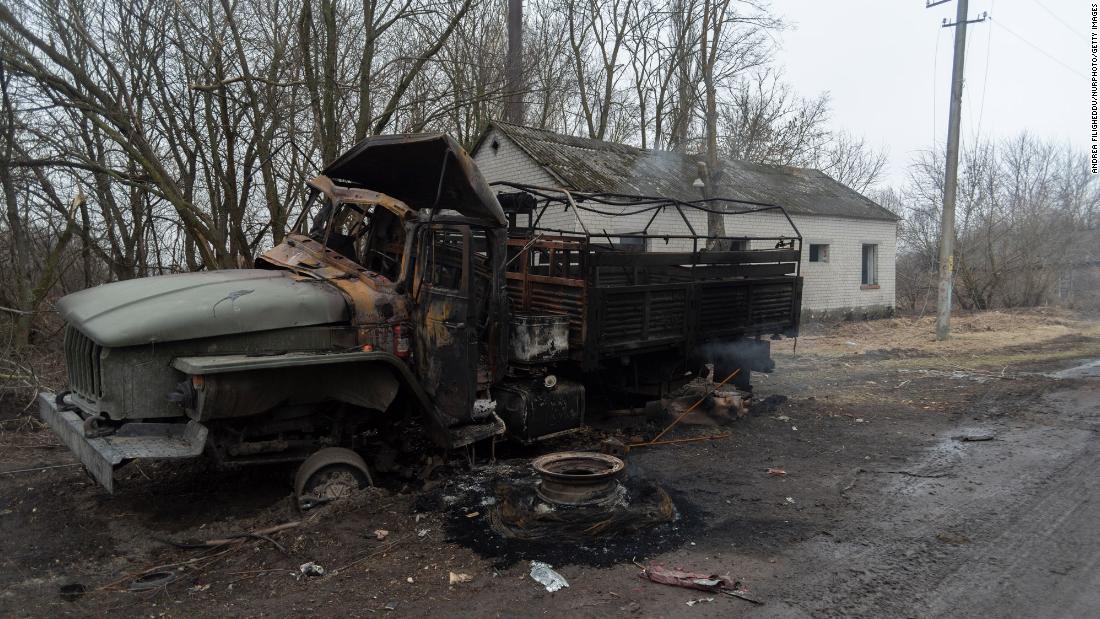 Moscow’s supply lines have been hit hard by Ukrainian resistance.
Moscow’s supply lines have been hit hard by Ukrainian resistance.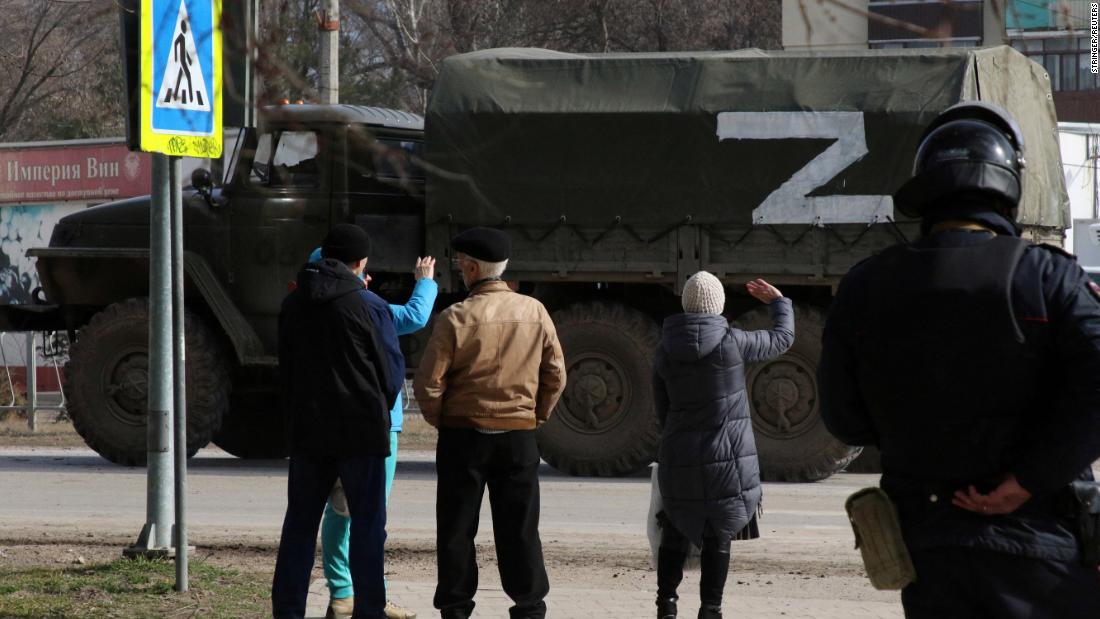 A Russian military truck with the letter ‘Z’, a symbol of its invasion of Ukraine, in the town of Armyansk, Crimea, on February 24.
A Russian military truck with the letter ‘Z’, a symbol of its invasion of Ukraine, in the town of Armyansk, Crimea, on February 24. Ukrainian soldiers in front of damaged Russian military trucks in the town of Trostsyanets, some 400 kilometers (250 miles) east of Kyiv on March 28.
Ukrainian soldiers in front of damaged Russian military trucks in the town of Trostsyanets, some 400 kilometers (250 miles) east of Kyiv on March 28.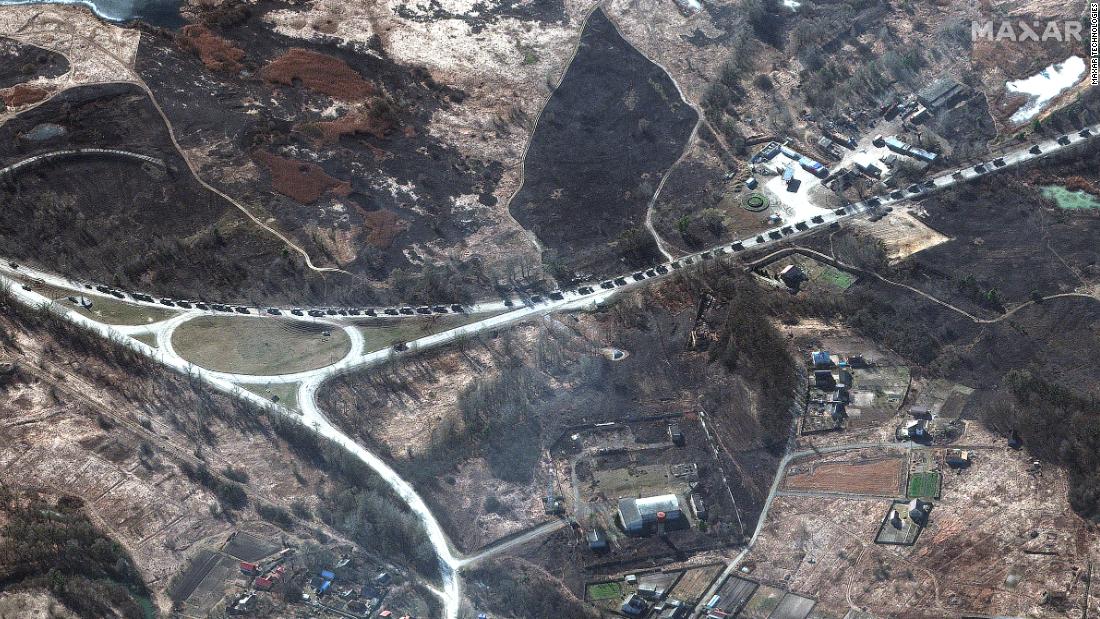 A satellite image of the stalled 40-mile-long convoy of Russian tanks, armored vehicles, and towed artillery in southern Invankiv.
A satellite image of the stalled 40-mile-long convoy of Russian tanks, armored vehicles, and towed artillery in southern Invankiv. An ambulance truck marked with a “Z” is seen destroyed at the central train station that was used as a Russian base in Trostyanets, Ukraine, on March 30.
An ambulance truck marked with a “Z” is seen destroyed at the central train station that was used as a Russian base in Trostyanets, Ukraine, on March 30. A truck that was being used by the Russian military lies destroyed in Trostyanets, Ukraine, on March 29.
A truck that was being used by the Russian military lies destroyed in Trostyanets, Ukraine, on March 29.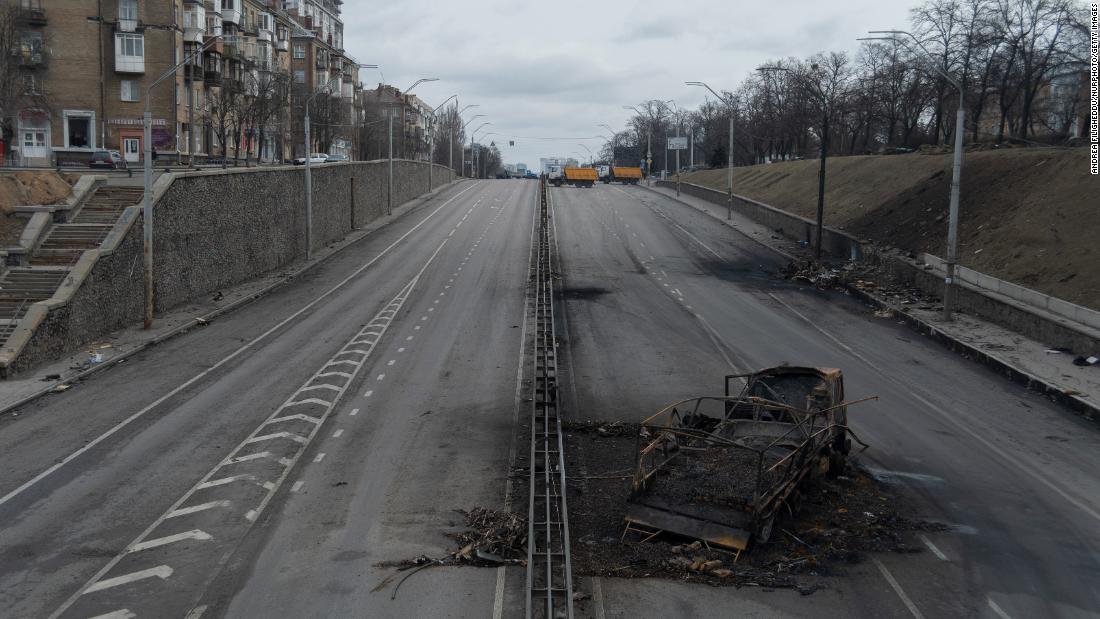 The aftermath of an explosion that destroyed a Russian truck in the streets of Kyiv, Ukraine, on March 4.
The aftermath of an explosion that destroyed a Russian truck in the streets of Kyiv, Ukraine, on March 4.